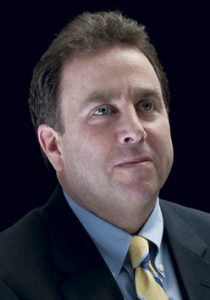PROFESSIONAL LIABILITY:
A FOCUS ON GROWTH
Across the various lines, a hard market
remains the one constant
By Lori Widmer
For the professional liability (PL) insurance market, 2021 was a tale of taking the good with the bad. According to Aon’s Management Liability Market Outlook for 2022 report, the holdover stresses of pandemic and global economic uncertainty still remain in that segment of the liability market. Those same stressors hit the medical professional liability market, which was also exacerbated by the public health crisis, staffing shortages and disruption of routine medical services, according to the Risk Placement Services 2022 U.S. Healthcare Market Outlook.
Even so, there is growth in the market. The Insurance Marketplace Realities 2022 report by Willis Towers Watson reports pressure on rates, retention and terms in the D&O market, but ample capacity is helping slow down rate increases.
Depending on the line of business, that seems to be the story across much of the professional liability market. “The market is continuing to grow with more contractual requirements for coverage and indemnification by suppliers,” says Amanda Sedliak, CIC,president of Capitol Special Risks, a division of Special Program Group. “More carriers are trying to move towards quoting platforms for smaller businesses. This is true for professional, cyber and even D&O.”

“Cyber has transitioned from a policy where you asked three to four basic questions to obtain coverage to a very complex information gathering and underwriting exercise. Asking 30 questions is now common.”
—Manny Cho
Executive Vice President, Executive Lines
Risk Placement Services
Manny Cho says that in terms of business written, things are picking up over 2021. “There’s more professional liability underwriting going on than there was last year,” says Cho, executive vice president of executive lines for Risk Placement Services. Even so, insurers are proceeding with caution. “Capacity limitations exist for many classes of business,” he adds.
The state of PL
That caution is fueling a continued hard market in some segments, says Anthony Dolce, head of professional liability for The Hartford. “The market is still relatively hard and capacity has shrunk, especially in accountants PL and lawyers PL; therefore, it may be difficult for agents to fill a tower. While there may not be many new competitors entering this arena, this pull-back in capacity may ‘harden’ the market even further, but it may also provide opportunities for some carriers.”
Sedliak is seeing similar conditions. She says that while there is “a great deal of capacity for professional liability coverage” some industry classes are becoming tougher to write. “Industries like healthcare, hospitality, collections and billing services have all had some constrictions in the capacity due to claims trends worsening due to impacts from the pandemic,” she says.

“More carriers are trying to move towards quoting platforms for smaller businesses. This is true for professional, cyber and even D&O.”
—Amanda Sedliak, CIC
President
Capitol Special Risks, a division of Special Program Group
When it comes to medical malpractice, the space tightens even further. “Rising defense costs and large payouts are the cause for increasing rates in the medical professional liability insurance space,” says Max Schloemann, CEO at MEDPLI Insurance Services. Schloemann says merger and acquisition (M&A) activity has put additional pressure on an already tight market. “The acquisition of NORCAL Group by ProAssurance is still a major shift in the medical malpractice insurance industry. The demutualization of Norcal Mutual Insurance Company—to become part of the stock company ProAssurance—led to a nice windfall for Norcal Mutual policyholders in 2021.
“Now, many ProAssurance insureds are seeing their rates increase—some minimal, others seeing rate increases over 20% in 2022,” he adds. “Claims history and underwriting profile of each risk is unique, so I recommend doctors work with an independent broker … to learn about other carrier partners … .”

“The effect of inflation on all aspects of the economy will naturally find its way to increased claims costs for insurers over the next 24 months.”
—Robert Cunningham
Senior Vice President, Professional Liability
Aspen Insurance
For Robert Cunningham, senior vice president of professional liability for Aspen Insurance, there’s additional pressure coming from a familiar area: the economy. “The effect of inflation on all aspects of the economy will naturally find its way to increased claims costs for insurers over the next 24 months. In the early days of the pandemic, many professional services firms were bracing for the worst and expecting a significant drop in revenues. Surprisingly and thankfully, most firms fared well, as many parts of the economy continued to thrive, and the financial markets continued to perform well despite the worldwide health crisis.”
Another concern, Cunningham says, is the impact on professional service firms from the pandemic, an impact he says has not yet been fully realized. “If we consider such issues as supply chain disruptions, labor shortages, construction setbacks, court proceedings and settlement delays, insurance coverages (or lack thereof) for business interruption, spikes in residential real estate transactions and social inflation, it does not take much foresight to see how future claims will develop against these professional services firms.”
Still, business is on the uptick. “There are a number of new markets that have begun operations over the last 18 to 36 months and are putting pressure on the market to have rates flatten,” Sedliak says. “There have been a number of underwriting teams that have shifted to these new markets, leaving knowledge gaps at many carriers.”
That speaks to what Cunningham says is a robust market in the general PL market. Still, he says that same robustness is not across the board, and is “a mixed bag depending on the segment, size of risk, and type of product. Most lines of PL, generally speaking, have been able to achieve modest to strong rate increases over the past 18 months, and capacity is readily available in the market.” Still, strong competition on smaller accounts, he says, have netted flat to modest decreases.
Yet, not all industries are enjoying the same landscape. Medical mal-practice, as Schloemann points out, continues to be a challenging market. “With higher claims payouts and rising defense costs for malpractice claims, the increase in premiums is necessary to maintain longevity. While rates are higher for all carriers due to these macro-factors that affect all carriers, doctors can seek more attractive coverage and rates when partnering with an independent broker specialized in medical malpractice insurance.”
Cho says that, for the most part, capacity is an issue. “Most carriers are only comfortable providing $3 million to $5 million in limits, which for many companies is sufficient. They are less willing to deploy $10 million in capacity. ”He says insurers who were considering adding cyber to their management liability policy are pulling back thanks to the increase in claims frequency and severity. “This applies to all professional liability classes, except technology E&O policies where cyber coverage is still available in combination.”
Sedliak says that in some lines of professional liability, as long as there are assurances, capacity can be had. Banks and financial institutions, she says, are facing a tougher regulatory environment, with “expanding regulations related to consumer protection, privacy and data protection as well as cyber and digital asset protection. Regulators are wanting businesses to ensure they are better protected against threats from bad actors by shoring up their business continuity and recovery plans.”
The cyber landscape
Cyber, in fact, has fully entered the insurance conversation, and insurers are looking for ways to simplify coverage. “Cyber has transitioned from a policy where you asked three to four basic questions to obtain coverage to a very complex information gathering and underwriting exercise. Asking 30 questions is now common,” says Cho.
“The market is seeing larger accounts pushing for combined errors and omissions/cyber forms,” says Dolce. “This eliminates the need for two separate carriers and two underwriters to negotiate with and there may be some savings in total premium.”
Still, claims frequency and severity continue to increase, according to a Willis Towers Watson report, and that continues to put pressure on those players offering cyber coverage. The report predicts a 50% to 150% increase in cyber insurance rates in 2022.
That means that for many carriers, cyber may remain its own separate policy. That may suit some buyers, says Dolce. “Some professional firms may be reluctant to risk the erosion of their malpractice limit on a cyber claim. Therefore a stand-alone cyber policy may be preferential for some accounts.”
How those policies are impacted by regulation remains to be seen, says Cho. In September 2021, he says, the Office of Foreign Assets Control (OFAC) modified its Cyber-Related Sanctions Program, updating its advisory to highlight the sanctions risks associated with ransomware payments, including proactive steps companies can take to mitigate the risks. Cho says such advisory language could impact cyber ransomware payments going forward.
Not that the market wasn’t already constricted. “Cyber is in the depths of a hard market and carriers have lowered limits, increased deductibles, and limited first-party coverages,” says Dolce. He says many insurers are looking for stronger controls and more attention to cyber mitigation strategies, such as “multi-factor authentication (MFA), air-gapped/offline backups and vulnerability scoring. Agents must understand these changes, especially the stricter controls, which are now ‘table stakes’ in the market and are here to stay.”
For agents and brokers selling to clients with cyber exposures, that means understanding policy requirements, too. “There are basic controls that every carrier wants to see in place. If those controls don’t exist, they will either not quote (or renew) or quote (renew) without ransomware coverage,” says Cho. “If insureds don’t have the controls implemented 60 days prior to the renewal, some carriers will not recognize the work. They may decline the risk (if new), won’t renew or will provide terms as if the insured didn’t have controls in place.”
Cho says that insurers are doing their own due diligence on that front. “Carriers are employing third-party service providers and/or are using their own proprietary technology to run external scans on every current/prospective insured to help with the underwriting process,” he says.
For that reason, Cho recommends that agents and brokers alert their clients to the requirements, changes, and steps needed well before renewal time. “These controls require time and money to implement, another reason why getting an early start is important,” he says.
The COVID factor
COVID, too, has created some notice-able underwriting changes. “Some classes of business are continuing to review how COVID-19 restrictions may impact their ability to provide services and/or may result in claims,” says Cho.
Sedliak says that insurance agents E&O and medical malpractice are already experiencing COVID-related exclusions. Real estate products, she says, are undergoing more thorough underwriting than prior to the pandemic, and especially hospitality-related coverage.
Claim drivers
With so many moving parts, it can be a challenge for agents and brokers to wrap their arms around the claims picture. Fortunately, there is some consistency within the claims arena that can help clients and their agents narrow down vulnerabilities. Sedliak lists some common claims as “employment-related claims as result of COVID, M&A or even closure, property managers seeing class action lawsuits for excessive fees, and cyber issues. Ransomware is still the number one driver of cyber claims currently.”
And claims are on the rise. “Some classes are seeing an increase in claims activity,” says Cho. “For instance, with architects and engineers (A&E), there is a rise in claims for professionals working on residential or habitational projects. For real estate, property managers have seen an increase in claims activity, especially during the pandemic and as the rent relief moratorium was lifted.”
Dolce says within the miscellaneous PL world, claims are much more specific to an industry. Still, there are some common drivers. “Not having a written contract in place is usually one of the main drivers of claims in this area. In the area of accountants professional liability, engagement letters that do not clearly define the firm’s scope of services continue to be a driver of claims.”
Another common driver, Dolce says: “Poor communication with clients also frequently gives rise to claims, especially involving Foreign Bank and Financial Accounts— when the firm only learns after the fact that their client had foreign bank accounts that were never addressed on the client’s tax filings. Underwriters have also been scrutinizing firms involved in special purpose acquisition companies work and conservation easements, given the higher risk associated with those project types/transactions.”
Cunningham says that there is concern as well as some evidence that the standard of care is changing. “There are a few classes of business where we are seeing or anticipating a changing standard of care (e.g., accountants and A&E). Accountants are seeing an uptick in cases, suggesting their audits are a guarantee of a company’s financial strength. These cases can be expensive to defend. In A&E, for example, how will COVID-19 affect design standards and responsibilities to protect workers in an office environment?”
Prepping for renewal
In a tough market, preparing clients for renewal time is essential, say the experts. Cho says that agents should be working with their clients to help them get a handle on not just the requirements, but the way claims are impacting their submission, as well. “If the insured has claims, it’s important to understand what happened and why,” he says. “What controls were in place? Where did things potentially go wrong? What has been done to prevent similar claims/events from occurring again? Then, the insured needs to take the corrective steps to prevent a similar claim from happening again.”
Sedliak agrees, saying that showing how future claims will be prevented is key. Tighter controls and ongoing training, she says, demonstrate to the carriers that risks are being mitigated and possibly improving. “As with most insurance, the best way to sell these products is through the discussion of potential claims that can significantly impact business operations or even lead to bankruptcy.”
That’s a harsh reality, but one that agents and brokers should be alerting their clients to. So, too, should clients be aware of claim reporting provisions, which Dolce says can vary depending on the insurer and the form. “These provisions should be examined by the agent and client to ensure that they understand them and that these terms align with their internal structure and processes.”
Other variances to be aware of: professional services definitions and service exclusions. Dolce says agents should work with clients to ensure that these terms are in alignment with their operations.
It all boils down to the basics, says Cunningham, who recommends that agents and brokers go “back to the fundamentals on how to best present your client to an underwriter. We see the spectrum from professional, well-articulated submissions to applications that have been photocopied for five consecutive years, only with a new date and signature.” With more attention upfront, agents and brokers can speed the submission and turnaround process, Cunningham adds.
So, too, can working with an insurer that understands your industry, says Schloemann. “With the increasing costs of defense and larger payouts, it’s now more important than ever to be with a carrier that can withstand difficult times and weather the storm we are heading into as an industry.”
No matter which line of professional liability agents and brokers are placing, one constant remains: a hard insurance market. Cho says the more done up-front, the easier it will be for agents and brokers to place business. “Preparation will be key this year for all insureds, especially for hard-to-place risks.”
For more information:
Aspen Insurance
www.aspen.co
Capitol Special Risks
www.csrisks.com
The Hartford
www.thehartford.com
MEDPLI Insurance Services
www.medpli.com
Risk Placement Services
www.rpsins.com
The author
Lori Widmer is a Philadelphia-based writer and editor who specializes in insurance and risk management.





